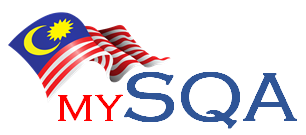The government’s IV&V Engagement involve four (4) distinct stakeholder groups at various stages of the engagement activities, and is specifically addressed in this IV&V Handbook. Figure 2.1 depicts the various stakeholders and the typical relationships between them.
Figure 2.1: IV&V Stakeholders
In a government ICT project, MyTCoE is exclusively acting on behalf of and for The Agency’s interests and advises on matters related to the IV&V Engagement. In this respect, stakeholders (e.g. IV&V Provider, Development Team) may request for MyTCoE assistance through The Agency’s project management team.
Table 2.1 below summarises the descriptions of each stakeholder.
|
Stakeholder |
Description |
|
IV&V Provider |
(a) Third-party organization that provides IV&V services through performing testing activities, oversights, and ICT project management services based on strong expertise and skill sets. (b) Independent from The Agency and/or the ICT Development Team. (c) Eligible to participate in The Agency’s ICT tender bidding process in accordance with the Government of Malaysia guidelines and procedures on procurement. |
|
The Agency |
(a) Consist of Malaysian public-sector ministries planning to install or adopt (acquire) new ICT products whether purchased or developed as commercial off-the-shelf (COTS), or by co-sourced, in-sourced, or outsourced vendors. (b) Procurers of the IV&V services. Performs the evaluation of IV&V Providers and engages their services. (c) Subjected to adherence to the Government’s guidelines on procurement, such as: - “1PP/PK2.1:Kaedah Perolehan Kerajaan”, - “Garis Panduan Permohonan Kelulusan Teknikal dan Pemantauan Projek Teknologi Maklumat dan Komunikasi (ICT) Agensi Sektor Awam”, and - “Panduan Pengurusan Projek ICT Sektor Awam(PPrISA)”. |
|
Development Team |
(a) Development Team performing the ICT development, COTS customisation and solution implementation as engaged by The Agency. (b) May be formed and governed as below: In-sourced: resource is fully staffed by Government employees, Co-sourced: resource is jointly staffed by Government and vendor employees, Outsourced: resource is fully staffed by (third party) vendor employees. Note: Full description of in-sourced, co-sourced and outsourced are provided in the latest “Panduan Pengurusan Projek ICT Sektor Awam(PPrISA)”.
|
|
MyTCoE |
A unit set up by MAMPU to oversee the implementation of IV&V in the public sector. Full details described in Section 2.1.1 on page 11 |
Table 2.1: Description of IV&V Stakeholders
2.1.1 Malaysian Public Sector Testing Centre of Excellence (MyTCoE)
The MyTCoE is a unit set up by MAMPU to provide testing advisory and guidance for the public sector. It is part of the 11th Malaysian Plan (2016-2020) which officially recognized software testing as a key activity. It is based on the vision of being the centre of leadership for Software Quality Assurance (SQA) for the public sector while acculturating Quality Assurance in Malaysian public sector groups towards a better quality of software processes and products.
MyTCoE is tasked with:
(a) advising and supporting the IV&V implementations in the public sector,
(b) being the resource centre for public agencies and providing advisory and consulting services, including:
- offering guidelines and policies for IV&V,
- offering acculturation programs, and
- supporting the virtual software testers’ community.
(c) administrative keeper of IV&V Handbook, including:
- responsible for updates and maintains the IV&V Handbook with the latest information, standards, enhancements and modifications.
Table 2.2 below lists the roles and mandates of MyTCoE.
| (a) MyTCoE as the administrative keeper of this IV&V Handbook |
|
MyTCoE maintains the best practices and standards for IV&V services and related IV&V activities through the IV&V Handbook. |
| (b) MyTCoE as the IV&V advisor to, and official reference for The Agency |
| Work with The Agency to review quality plans, assist in determining the need for engaging an IV&V Provider for specific projects. Make recommendations for a particular project during the application for approval to Jawatankuasa Teknikal ICT Sektor Awam (JTISA) on degree and nature of the IV&V Provider-The Agency relationship warranted for that project (i.e., relationship between the PMO and TMO). Provides guidance and advice to The Agency throughout the pre-, during, or post- IV&V Engagement phases. Where required: • enforces the relevant best practices in the IV&V Handbook, • measures or obtains measurements of quality level at respective milestones, also known as ‘Quality Gates’. Educates The Agency’s staff on IV&V and on matters related to IV&V activities across engagement phases, types, and testing needs. Supports JTISA decisions. Supports quality status reporting and issue close-out by The Agency. Analyses and manages the warehousing of metrics, i.e. across project testing measures such as defect counts. |
Table 2.2: Roles of MyTCoE
The Agency managing any IV&V Engagements should review and consult the latest official publications, guidelines and policies, which include change requests, guidelines, policies, and circulars published by MoF and MAMPU for the public sector.
Engagement for high-risk, critical ICT projects must be particularly sensitive to the latest publications, guidelines and policies. IV&V Providers and The Agency should be aware of any updates and staying abreast of changes to this IV&V Handbook as and when provided by MyTCoE.

